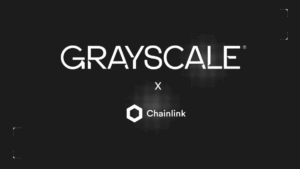TL;DR
- Cross-chain challenge: Uniswap’s Compact v1 directly addresses fragmented liquidity and the difficulty of non-atomic transactions by introducing reusable resource locks that allow tokens to remain under user control while still enabling secure commitments across multiple chains.
- System design: The framework introduces allocators, arbiters, tribunals, and emissaries, creating a modular verification system that prevents double-spending and validates conditions.
- Ecosystem impact: Already adopted by LI.FI and Rhinestone, Compact v1 will underpin UniswapX swaps, expand to additional networks, and potentially become a widely used standard for developers building interoperable dApps.
Uniswap Labs has introduced Compact v1, an ownerless ERC-6909 contract designed to address one of the most pressing challenges in decentralized finance: cross-chain fragmentation. By enabling reusable resource locks and programmable commitments, the system provides a shared framework for developers to build interoperable applications without sacrificing security or composability. Already adopted by teams such as LI.FI and Rhinestone, Compact v1 is positioned to become a foundational primitive for cross-chain settlement.
Tackling Fragmentation in Cross-Chain Systems
The rise of rollups and diverse execution environments has created a fractured landscape where liquidity is scattered across incompatible protocols. Traditional escrow-based solutions often force users to give up custody or rely on centralized intermediaries, limiting composability and increasing risk. Compact v1 seeks to eliminate these inefficiencies by offering a standardized, ownerless contract that allows tokens to be credibly committed across chains while remaining under user control.
How Compact v1 Works
At the core of Compact v1 are Resource Locks, created when sponsors deposit tokens into the contract. These locks generate ERC-6909 tokens that remain under the sponsor’s control but can back multiple Compacts, or verifiable commitments. The architecture introduces four roles: Allocators prevent double-spending, Arbiters verify conditions for claims, Tribunal acts as a settlement engine for cross-chain swaps, and Emissaries provide fallback verification for smart contract wallets. This modular design allows developers to tailor trust models and settlement mechanisms to their specific needs.

Security and Ecosystem Adoption
Uniswap Labs emphasized security by commissioning independent reviews from OpenZeppelin and Spearbit, with full audit reports forthcoming. Compact v1 will also be integrated into Uniswap’s bug bounty program. Early adoption by LI.FI and Rhinestone highlight the system’s potential to become a widely used standard. The protocol is already deployed on Ethereum mainnet, Unichain, Base, and Arbitrum, with more networks planned.
Implications for Uniswap and Beyond
Compact v1 is set to power cross-chain swaps on UniswapX, expanding the platform’s role in decentralized trading. By abstracting away the complexity of asynchronous execution environments, the system allows developers to deliver seamless user experiences without building siloed infrastructure. With Uniswap’s monthly trading volume rising to $143 billion in August from $99.3 billion in July, the introduction of Compact v1 underscores the protocol’s ambition to remain at the forefront of decentralized finance innovation.










